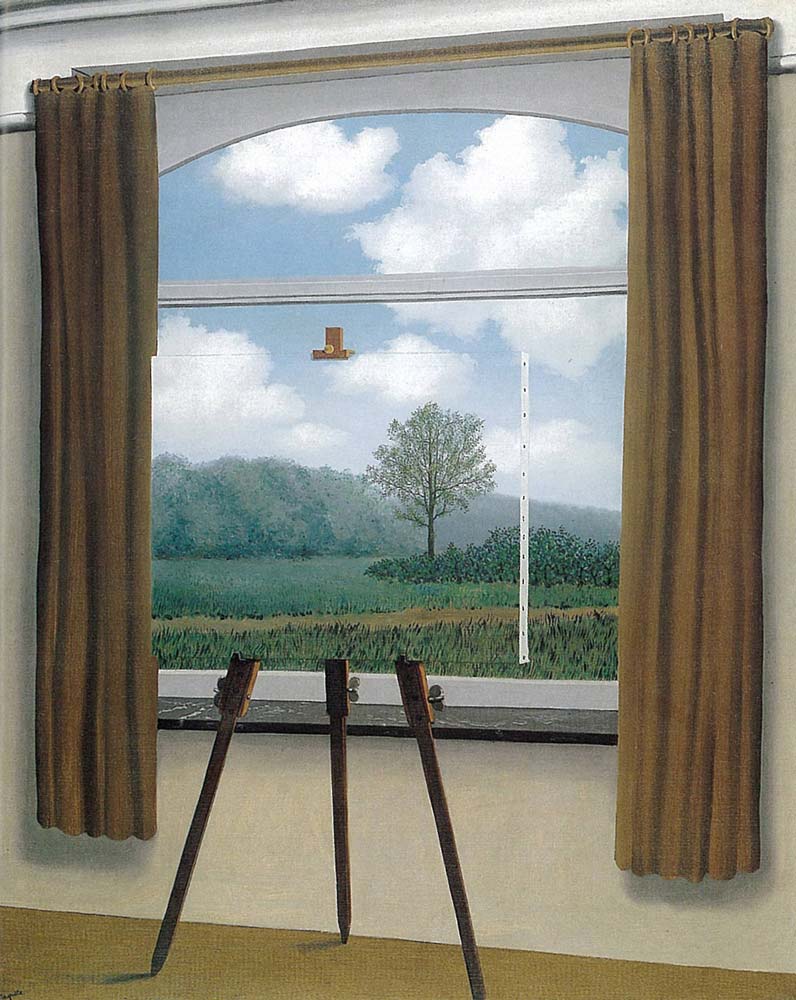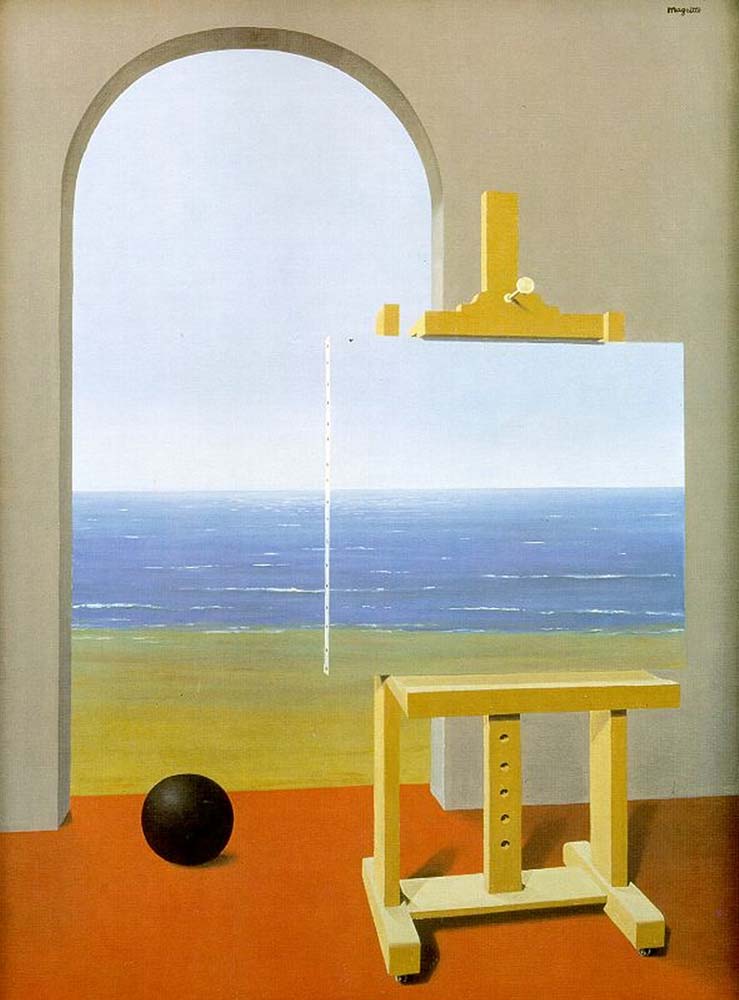| The Human Condition | |
|---|---|
 |
|
| Artist | René Magritte |
| Year | 1933 |
| Medium | Oil on canvas |
| Location | National Gallery of Art, Washington DC |
| Dimensions | 39 in × 32 in |
| 100 cm × 81 cm | |
| The Human Condition | |
|---|---|
 |
|
| Artist | René Magritte |
| Year | 1935 |
| Medium | Oil on canvas |
| Location | Simon Spierer Collection, Geneva, Switzerland |
| Dimensions | 39 in × 32 in |
| 100 cm × 81 cm | |
| René Magritte Famous Paintings | |
| The Son of Man, 1964 | |
| The Treachery of Images, 1928–29 | |
| The Human Condition, 1933 | |
| Golconda, 1953 | |
| The Listening Room, 1952 | |
| The False Mirror, 1928 | |
| Elective Affinities, 1933 | |
| The Mysteries of the Horizon, 1955 | |
| The Empty Mask, 1928 | |
| Complete Works |
The Human Condition, by René Magritte, is actually the name attributed to two paintings that depict a similar theme. Using a technique that is frequently referred to as a “painting within a painting,” these paintings depict a depiction. Each painting portrays an easel mounted with a canvas of an artist’s just-completed portrayal of a scene. The actual scene being depicted is partially covered by the painting, giving the illusion that the canvas is melted into the background of the overall painting.
The Paintings
One of the two paintings is that of an easel placed in front of an ocean-view window, in which the inner painting portrays the ocean view. The other painting is an easel placed in front of a curtained window with a landscape view, and the inner painting depicts the landscaping in a similar fashion as the ocean view painting. The painting seems to join the subject matter being painted.
The Artist
Born in 1898, Belgian author René Magritte was known for his artistic talent in surrealism, as well as his witty view of life in general. He became famous for portraying ordinary objects in extraordinary ways, lending to his classification as a surrealist.
The Human Condition
Magritte believed that reality is a matter of perception. For example, in both paintings of The Human Condition, the viewer is prevented from seeing the actual subject matter being painted, because it is blocked by the artist’s painting of the subject matter. We are only allowed to see what we are allowed to see. Such is the case, as Magritte stated, with life. Time and distance lose relevance as perception moves to the forefront.
In both paintings, the outline of the easel is barely discernible, which has been interpreted by some to show the fine line between reality and perception. However, as one views these paintings, it is difficult to not see the “painting of a painting” as perception. The fact that the painting in the picture is partially covering up the subject of the very same painting may be significant because it is a recurring theme throughout Magritte’s work. It is believed that Magritte, whose exterior demeanor covered up a very different interior, is the inspiration for these works.